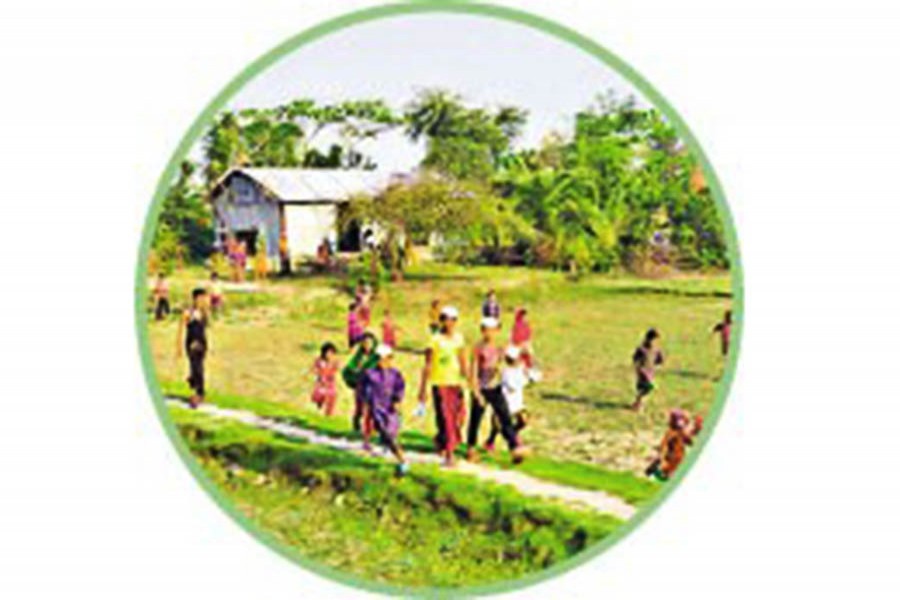Spontaneous outdoor jubilations involving post-teen girls on the HSC (Higher Secondary Certificate) results day are yearly spectacles in the country's cities, especially Dhaka. Similar revelries are also held on the SSC (Secondary School Certificate) results day. But they are a little subdued, thanks to their being still far from being a door to the greater academic world. The HSC results day has long been regarded one filled with boundless festivities. And they are city-focused. But in the vast rural area, the character of these special days is also changing fast. In place of the earlier muffled jubilation, many semi-rural colleges are now seen engaging in the HSC results pageantries. Those days are gone when no-pass institutions would have a dominant presence among the colleges. Instead, the number of the grade point average (GPA) scorers continues to increase among both school and college girls. Like with boys, there are scores of GPA-5 achievers among girls as well.
In the past, the GPA-5 achieving rural college girls were a rare sight. The scenario is changing fast. Better colleges now produce numbers of girls with brilliant results every year. What's worth noting here is the girls' resolve to reach a certain height in their academic life. Their parents' willingness to see their daughters climb up the challenging steps plays a significant role here. Nowadays, there are many girls who after passing the exams with a better GPA think of getting admission to the universities or a nearby degree college. Others with just good results cannot dream big; they remain content with staying back in the obscure local or small-town colleges. Knowing well that attempts to get admitted to the reputed universities in Dhaka or other cities will prove futile, many go for the National University. It's easier to enrol there. Lots of girls follow suit.
Better HSC results are changing the rural scenario, especially those having girls as protagonists. The development was beyond comprehension decades ago. Many girl-students passing out of colleges invariably feel the elders' pressure to give consent to marriage. On many occasions, girls dreaming of entering the world of further studies at universities resist the pressure of getting married off. Only a few succeed. Those who can evade marriage for the time being try to land jobs of teaching at school, or start giving private tuition to school students. A recent development in the suburban villages is the colleges offering Honours courses in English. Many female students discover in it great job prospects. An Honours degree is virtually a ticket to a permanent job at a local high school. Students having a Masters can apply for jobs at small-town colleges. The teaching profession was once the domain of male students. Now females are joining the job in droves.
It's now apparent that the better results in the HSC play the role of a fulcrum in the radical changes of young literate women in villages. Those who can manage to reach Dhaka or other big cities and get admitted to a university do not have to turn back any more. Yet a few return to their villages after the completion of studies. They are found engaging in different types of entrepreneurship. These enterprising women are now everywhere in Bangladesh villages. Ranging from running poultry farms, cottage and small & medium industries to off-beat income generation activities, they eventually prove themselves to be a part of the rural economy. Of the rest, many are found going abroad on job assignments or doing highly paid chief executive's jobs in the country. Many stay put. But these high-dreaming ladies turn to entrepreneurship and business.
Bangladesh has lately been on the road to change. Change defines its social, economic and cultural identities. Although imperceptible, and not realised by even women themselves, Bangladesh women are increasingly finding themselves in the driving seats of many socio-economic sectors. The baggage of discriminations plagues them. Empathy among them serves as a perfect catalyst for solidarity. It's on the socio-cultural front that women are finding the seeds of their multi-layered liberation. But when it comes to culture, several delicate issues crop up. Made immobile by obscurantism not too long ago, the lager sections of womenfolk still dither on taking how much of the new-era messages. Many are confused over how much of the socio-cultural trends they ought to welcome and turn down the rest. All this is a part of the culture in which they have grown up. This flexible society has never accepted rigidity. By its quintessential nature, it allows the smooth flourishing of an indigenous eclecticism. This very state allows women to accept and reject different types of customs and day-to-day rites. It has defined the women of Bangladesh today.
The process begins among the young women in literate rural families, and also among the urban ones at an early age --- especially at their post-HSC stage. There were days, when the socially progressive women would emerge from the urban residents. As time wore on, the scenario has kept changing. Young and educated rural women are coming up to tell what's beneficial to the women in general from what's not. Some of them are unflinching in their commitment to staying in the village. By doing so, the young women are giving a great national service to the country. To speak in another way, it's them who are restoring the true image and strength of the Bangladesh villages.


